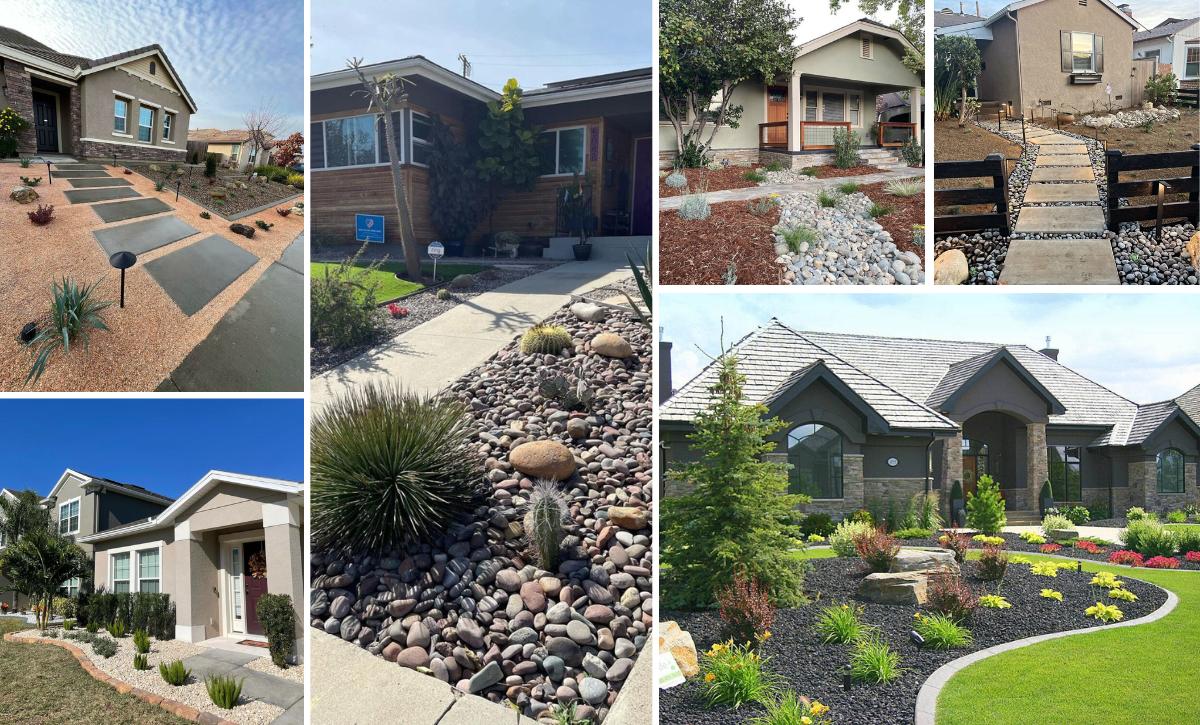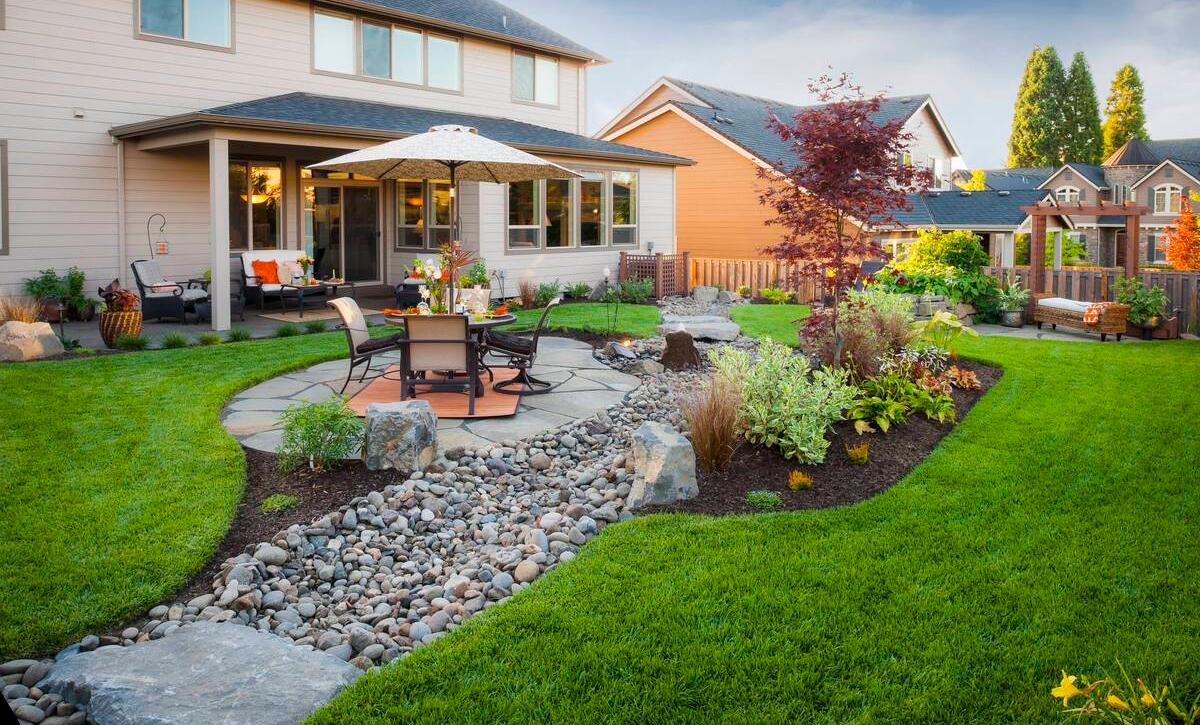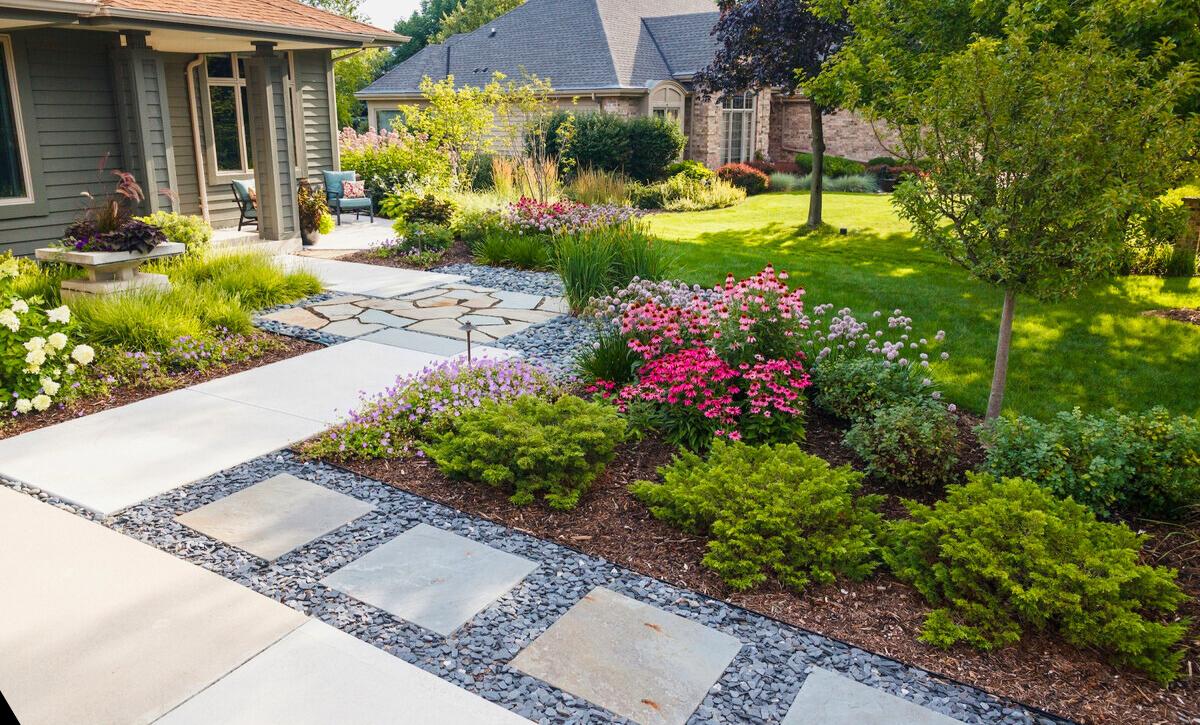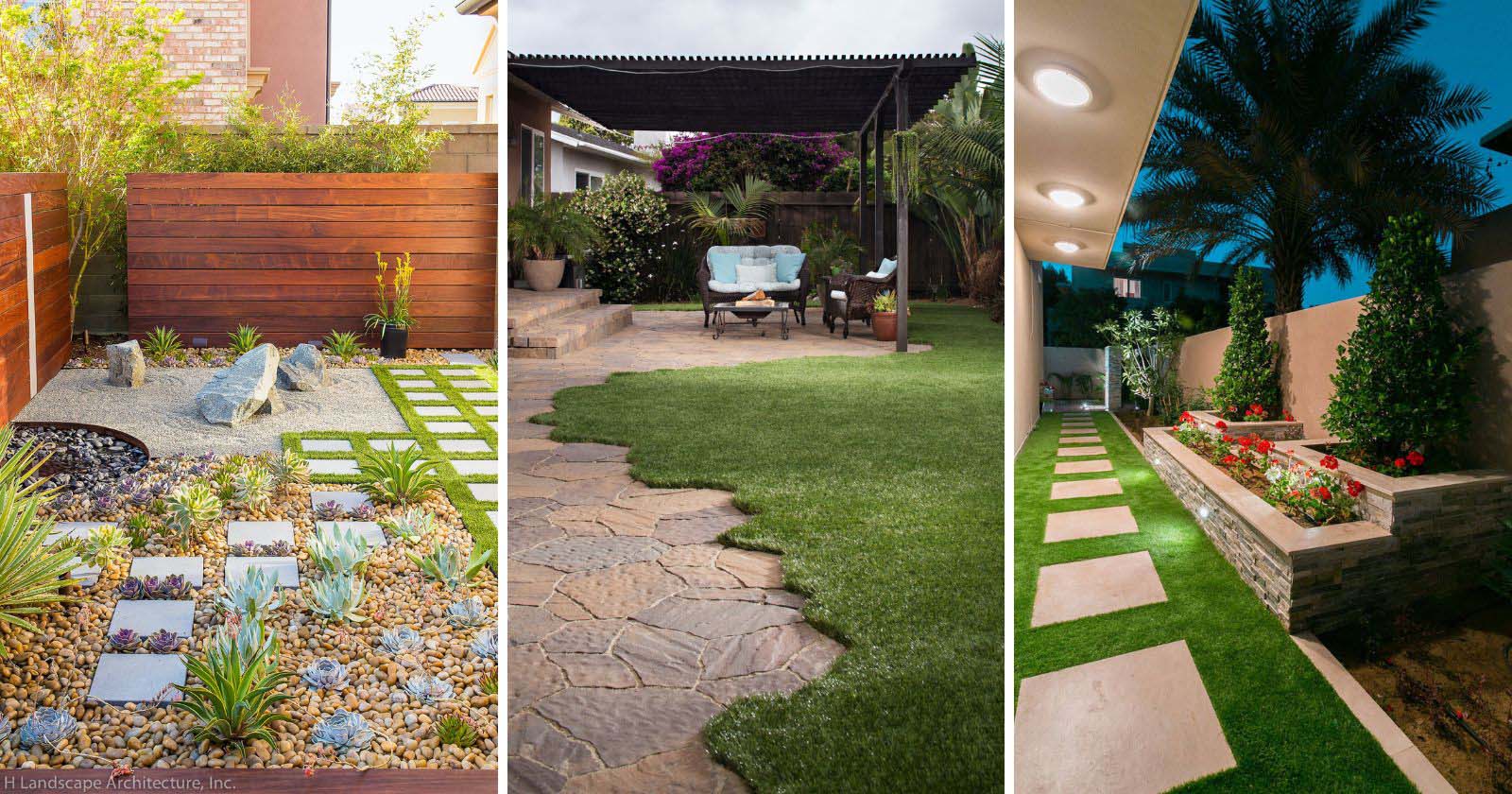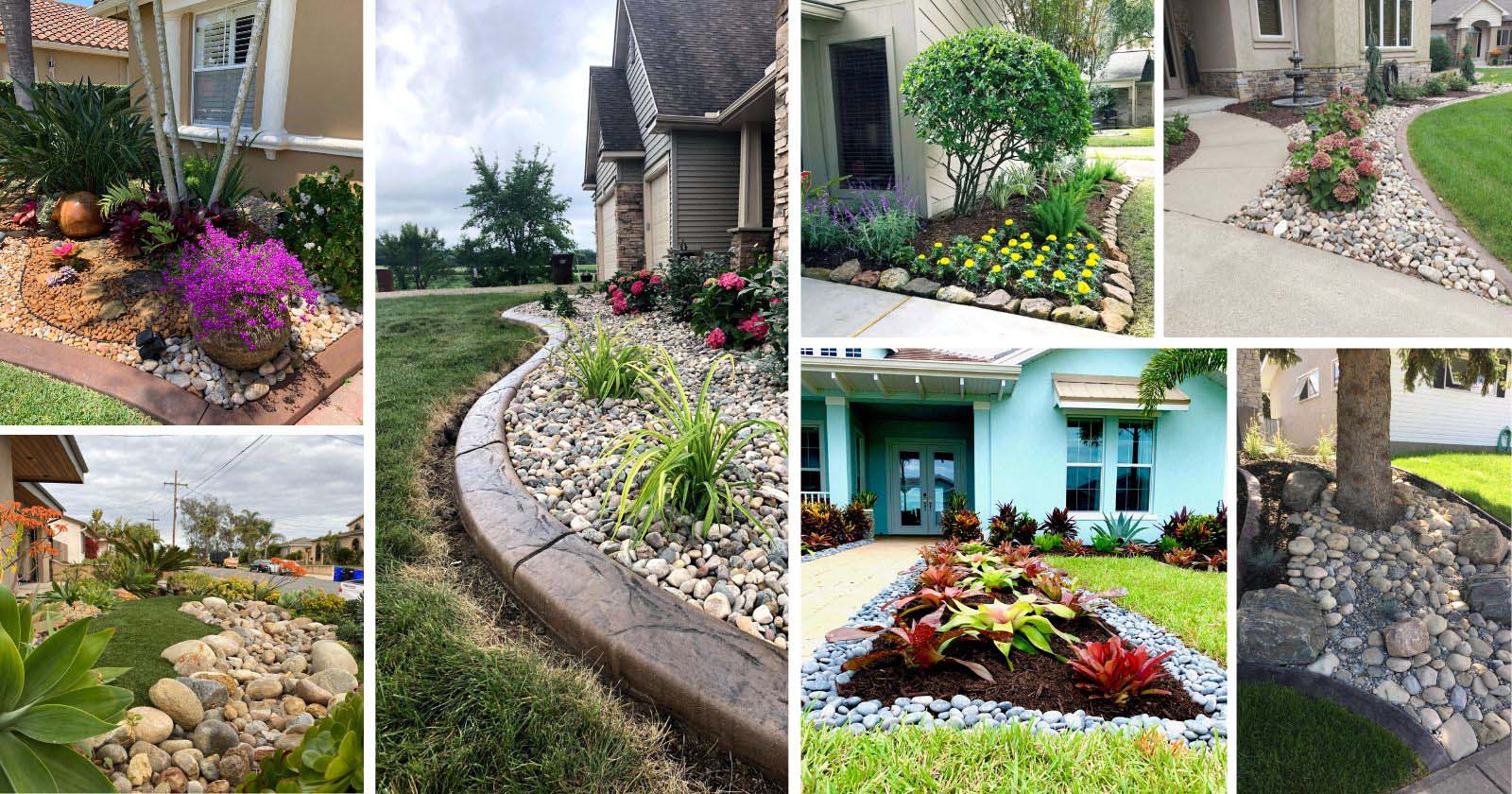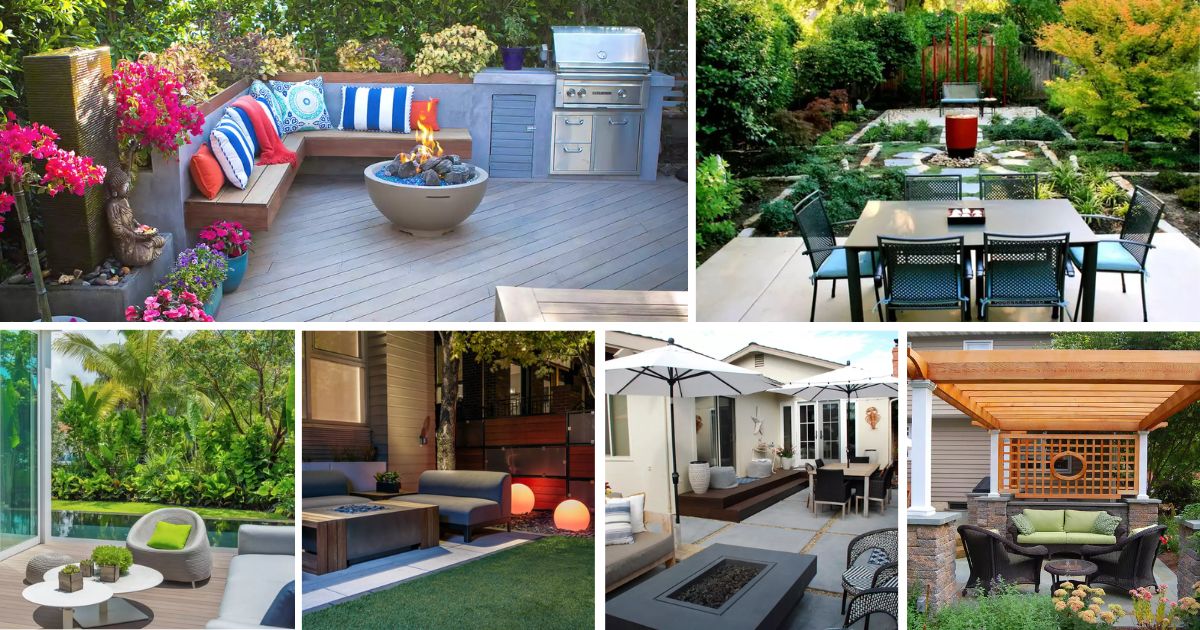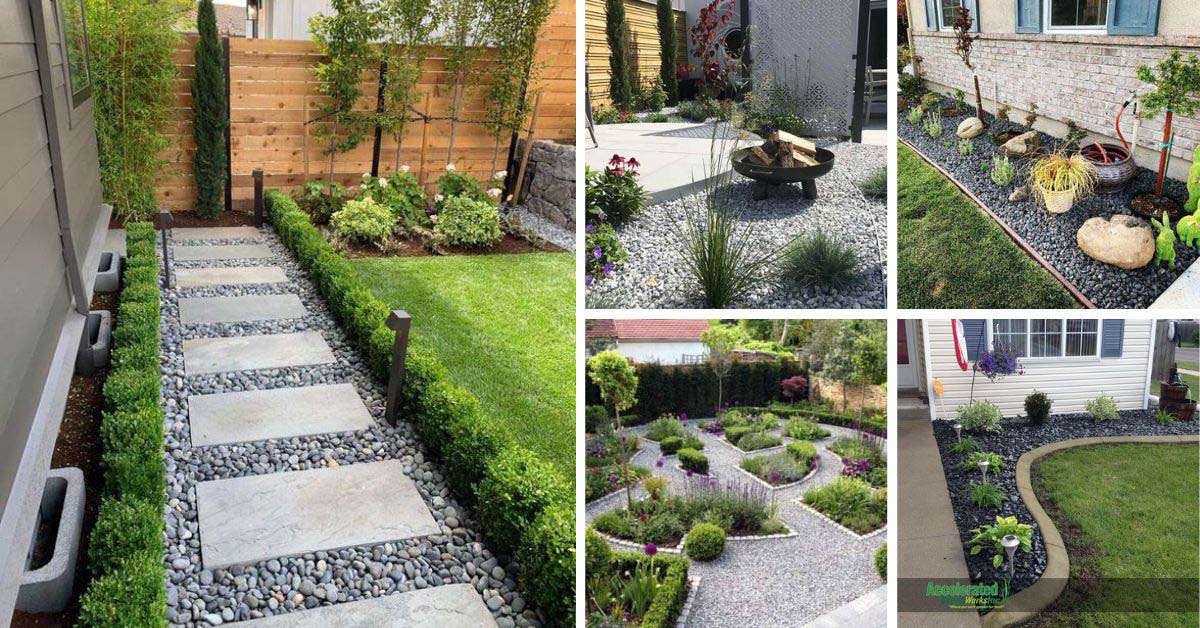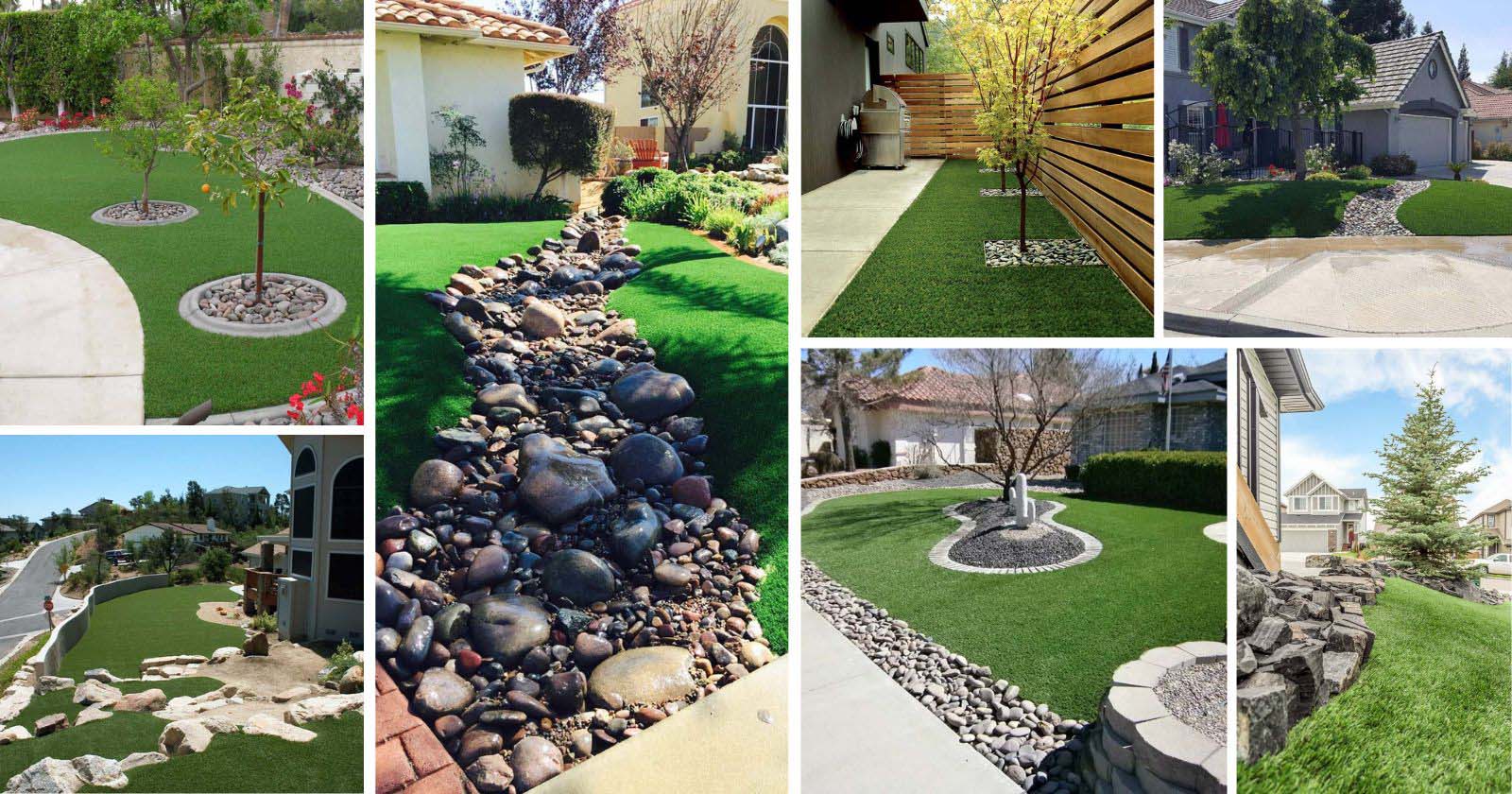A million-dollar question: Are there any hillside landscaping ideas on a budget that I can easily recreate and not spend a lot of money on?
Fortunately, all of the landscaping ideas in this selection are budget-friendly and could be done cheaply.
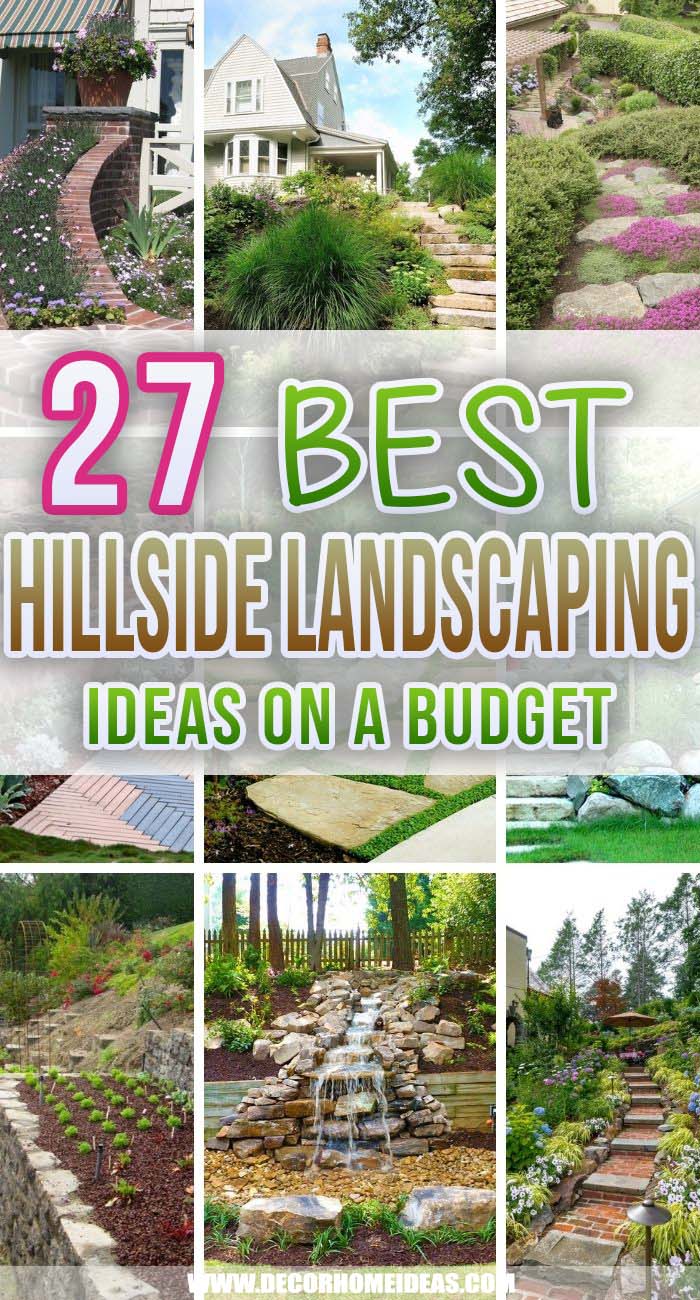
- How can I landscape my hillside cheap?
The most popular ways to landscape a hill without spending a fortune are by planting ground cover, building a retaining wall or using rocks and flagstones to create stairs.
- What do you put on a hillside?
Deep-rooted plants, such as prairie plants, hold their own on even the steepest slope. Ornamental grasses, ground cover roses and shrubs. Low-maintenance drought-tolerant plants will do well.
1. Craftsmanship and Nature Intertwine on Brick Wall
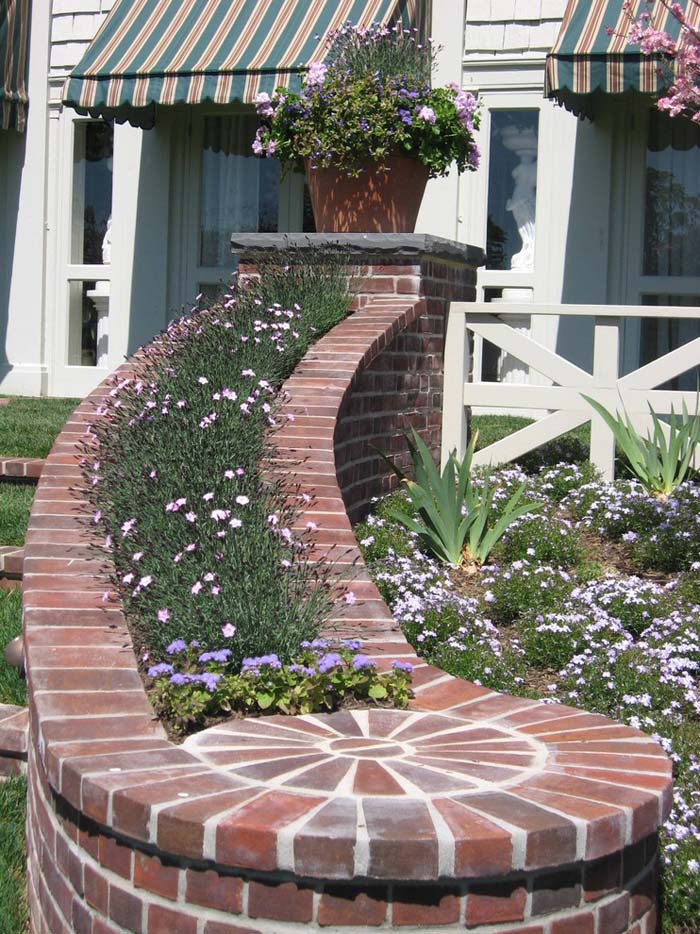
Add depth to the steps with this formal brick wall. The circle of bricks at the bottom shows off a touch of craftsmanship.
The cascade of flowers planted in the center adds an organic touch to this farmhouse-style home.
2. Add Charm to a Rose Garden with Multi-Tiered Seating Area
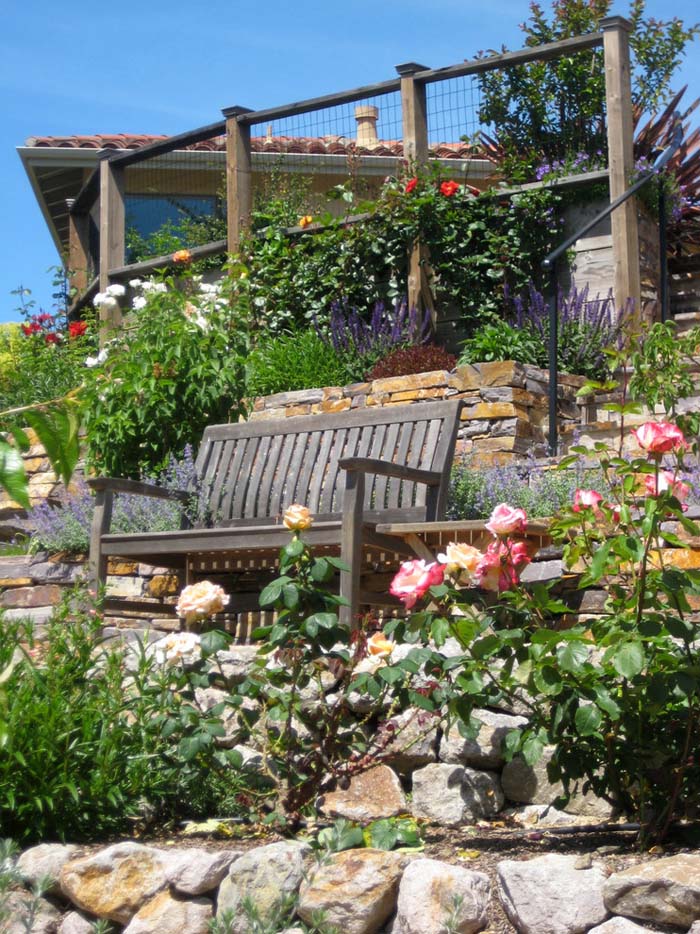
If your yard’s hill has an area that levels off, consider building multiple tiers. This yard had enough of a flat surface in the middle to add a seating section in the middle.
Positioning the bench between retaining walls created a fragrant area among the rose beds.
via Garden Nest
3. Upgrade Your Hillside with a Stunning Waterfall and Pool
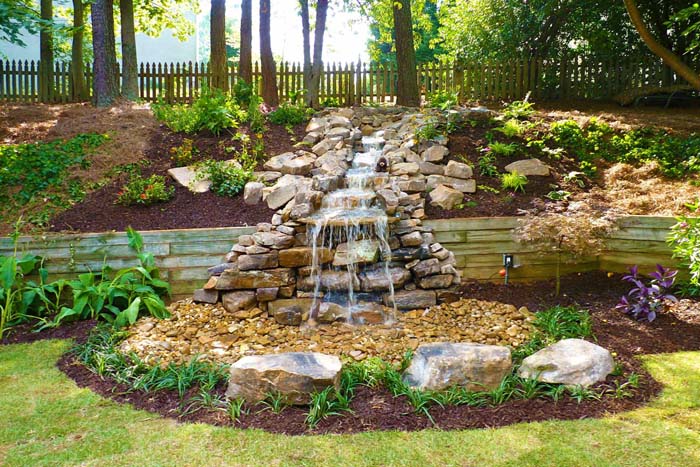
A simple hillside gets a big upgrade with a waterfall. The water drains into a pool with a return pump.
The pool is hidden under river rocks and surrounded by boulders. It creates the illusion the water feature is original to the landscape.
via Outdoor Makeover
4. Opt for Local Plants and Stone Slabs for Your Hillside Yard
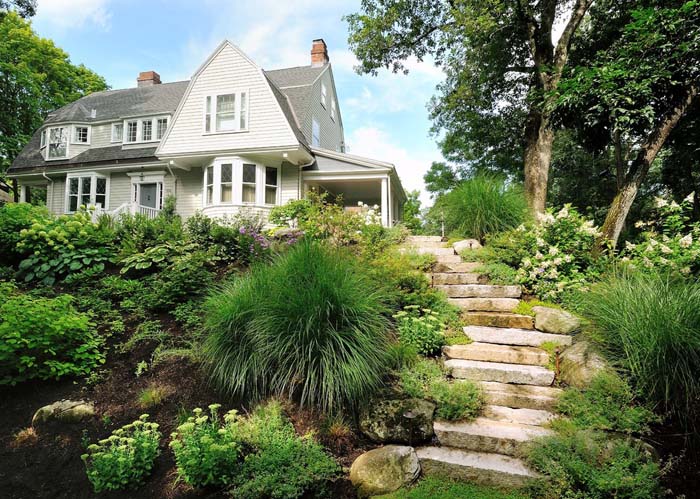
Another option for landscaping your hillside yard is to load up on plants. The best plants to use will be found locally. They have the best chance to survive and thrive. The plants will also play well with others.
Stone slabs are a great option for steps. They prevent the dirt from shifting and can be cut in odd dimensions.
5. Create an Elegant Path with Light-Colored Pavers at Hill Base
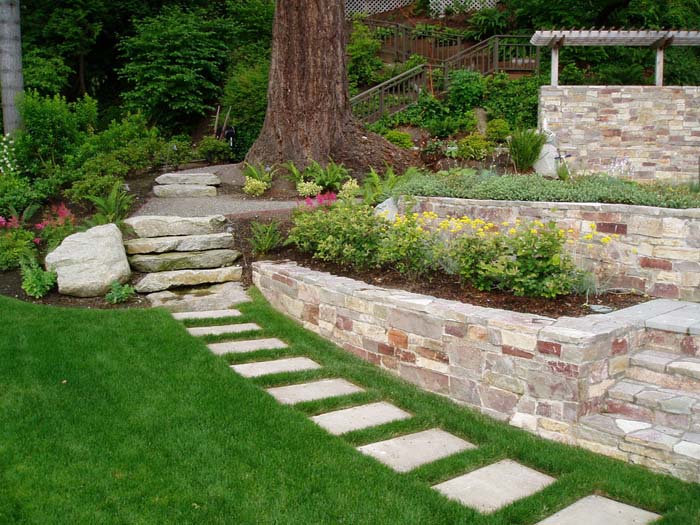
The deliberate placement of the light-colored pavers at the base of the hill creates a sophisticated path.
It creates a distinct change from the organic look of the walls and plants up the steps.
via Studio 342
6. Show Off Bold Design with Brick Retaining Walls and Stairs
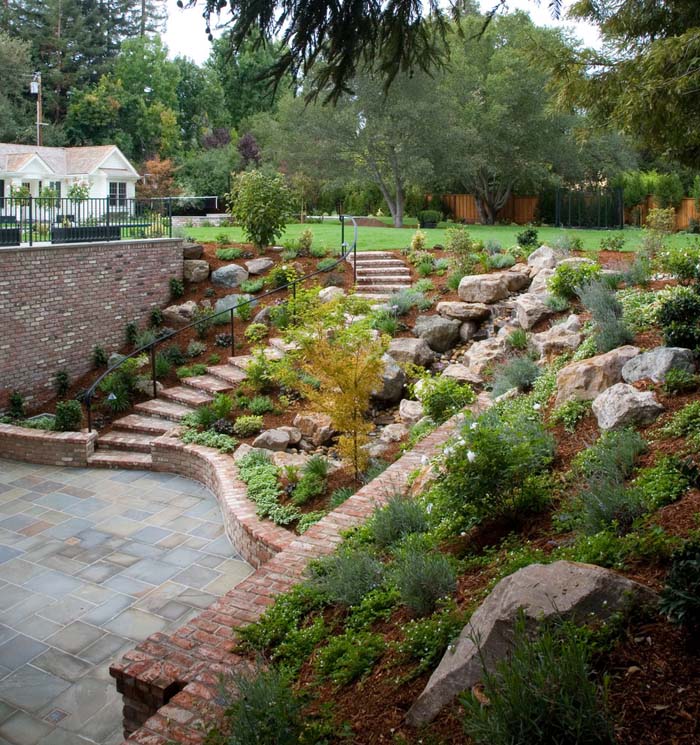
This landscape went all-in with brick. It was used on the tall and low retaining walls.
It was also used for the stairs. The stepped boulders are a unique way to hold back dirt and create interest on the hill.
7. Create a Glamorous Hillside Retreat with Stone Slabs Stairs
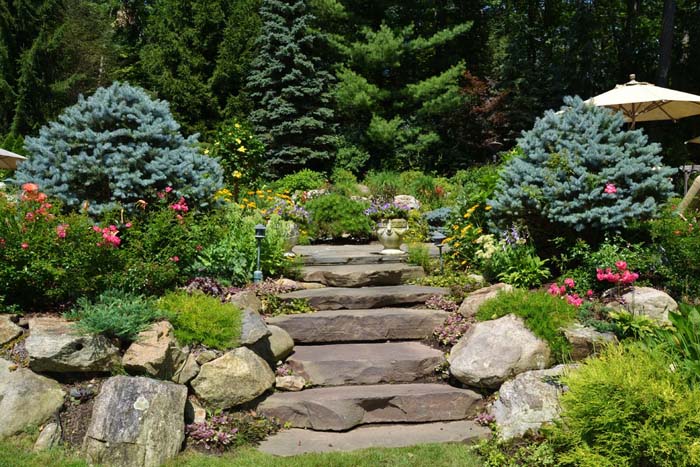
Look for flat areas along your hill that can be leveled and used as a seating or dining area.
When going for an organic look, build your steps using natural materials like these stone slabs. Matching plants on each side creates a bookend look.
8. Concrete Stairs and Seating with Contrasting Design Elements
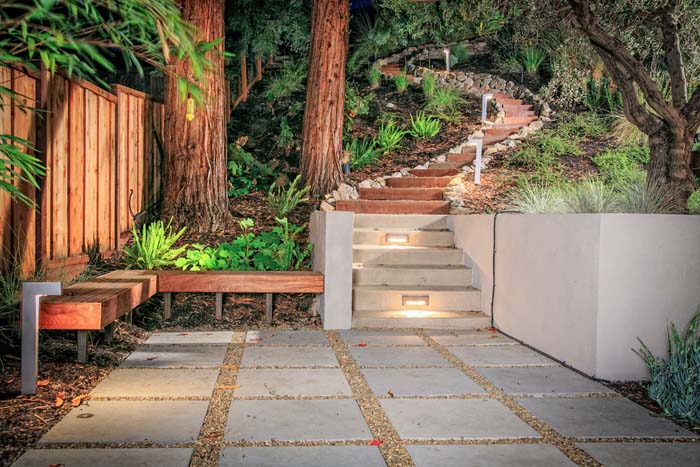
This winding path compels you to climb its stairs. The stairs and retaining wall were made from poured concrete. The seating area contrasts the path by using hard corners and angles. It also separates itself by using gray concrete and pavers.
The two sections are connected by the brown pea gravel flowing underneath the pavers.
9. Adorn a Dining Area with Brick and Reclaimed Cement Stairs
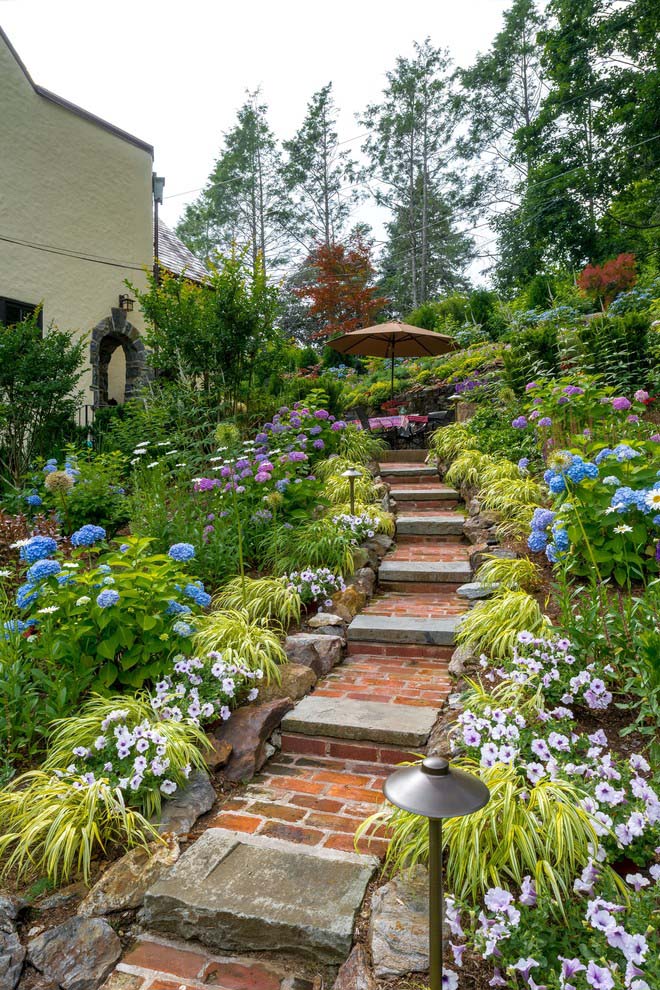
Tall flowers create a dreamy garden. Brick and reclaimed cement slabs form the stairs that lead to an umbrella covered dining area.
The lamps lighting the steps blend into the landscape.
10. Utilize Large Steps to Divide Your Yard
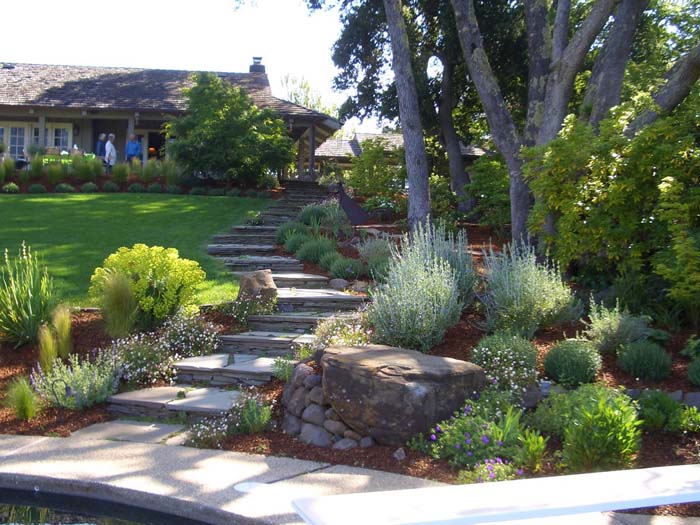
Use large steps to divide a sloping yard. A grassy area provides lush contrast to the older trees.
Stairs provide easy access to the house and split the yard into two sections.
via Keith Willig
11. Modify Hillside Stairway with Creeping Thyme Ground Cover
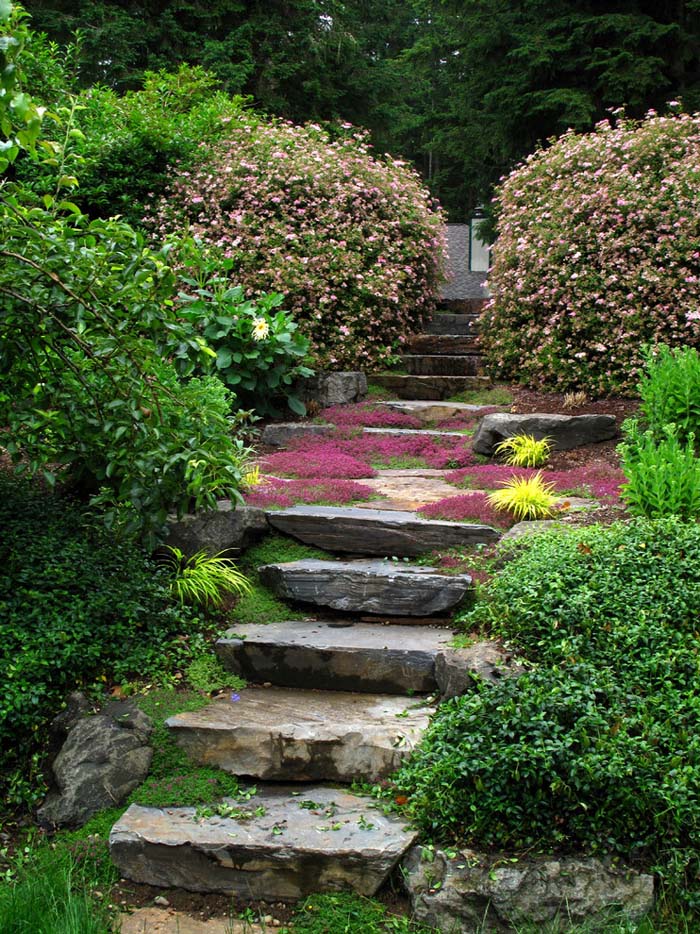
When creating a stairway, it’s important to account for the slope and distance. The slabs at the base are wider. In the middle, adding a plateau eases the transition before the final five steps. The owners created a little piece of paradise there by adding Creeping Thyme ground cover.
Creeping herbs are a useful and affordable way to add a ground cover to your landscape. They attract pollinators and are fragrant and edible.
Golden Oregano is a hearty alternative to the Creeping Thyme shown here.
via Houzz
12. Serene Waterfall for Pool with Tiered Retaining Walls Accent
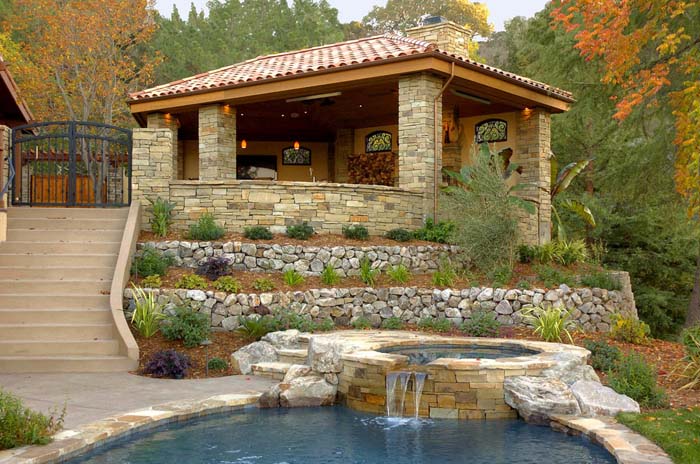
Two tiers of retaining walls separate the patio and pool area. The side of the hot tub, pool edge and toppers were finished with the same stone as the patio walls and pillars. Water flowing from the tub to the pool creates a soothing waterfall sound.
Building tiers into the hill save money on excavation. Building low retaining walls can be a rewarding do-it-yourself project.
13. Add Seating and a Flood-Preventing Pond to Sloping Yard
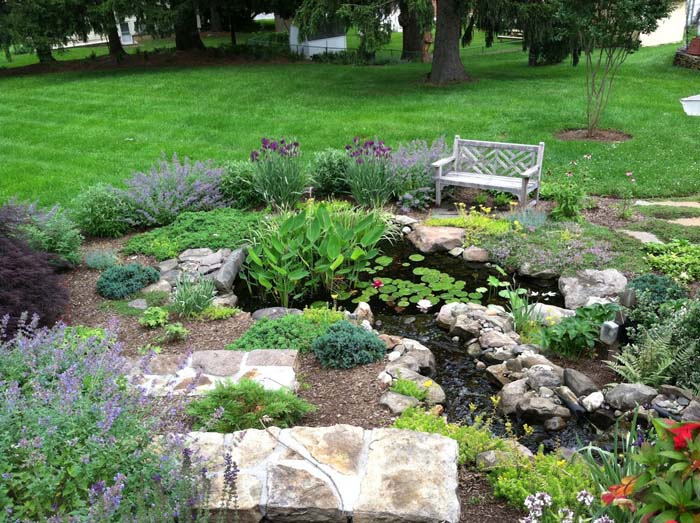
Add steps and a seating area at the bottom of the hill. If you have an area that gets flooded, build a pond with a pump to prevent mosquitoes from laying eggs.
This yard uses its natural slope to drain water into the desired area. The garden area is defined using pea gravel as the base.
14. Revamp Your Hillside with Stone Walls and Stairs, and Gazebo
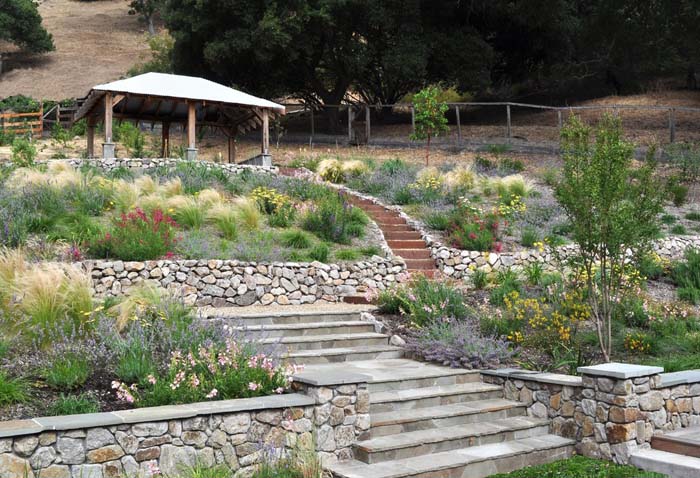
Build retaining walls and stairs using natural stones and slabs. The shaded seating area creates a welcoming rest area.
via Huettl Design
15. Embellish Hillside Stone Steps with Colorful Ground Cover
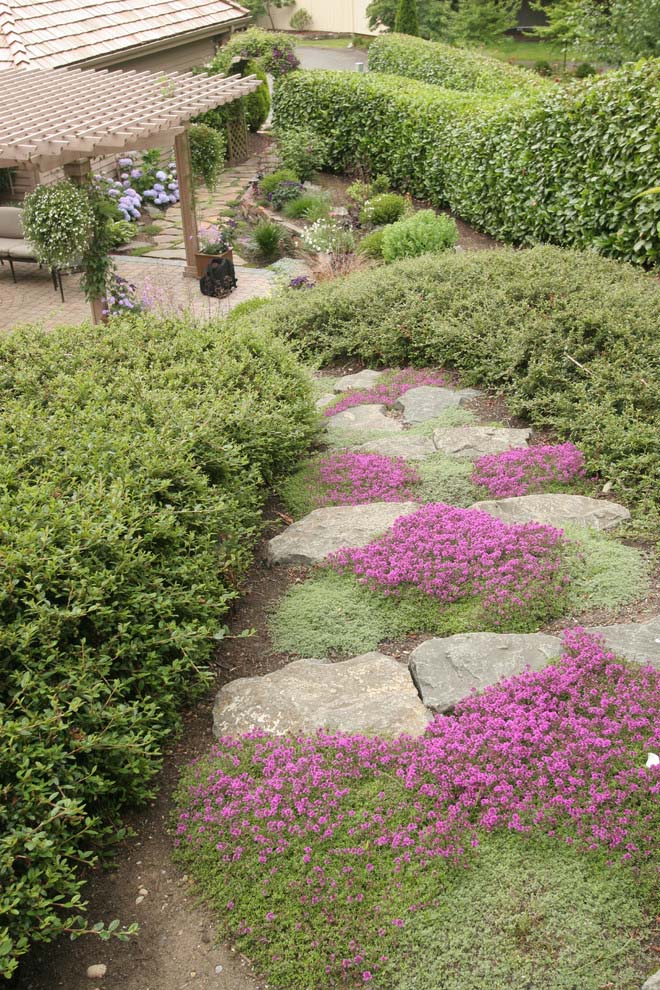
The ground cover doesn’t have to sit on the sidelines. It can be used in place of gravel on walkways. This path mixes ground cover with large stone slabs.
The types of ground cover you choose will vary according to the climate in your area.
16. Add Texture to Your Retaining Wall with Climbing Ivy
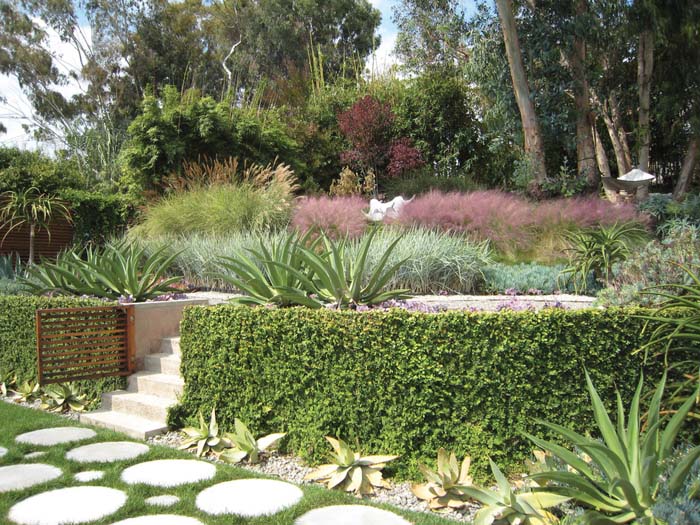
The retaining wall is concealed by climbing ivy.
Ornamental grasses create privacy around a secluded seating area. White round pavers at the bottom add a touch of whimsy.
via Griffin Enright Architects
17. Create Cohesive Retaining Walls with Varied Materials
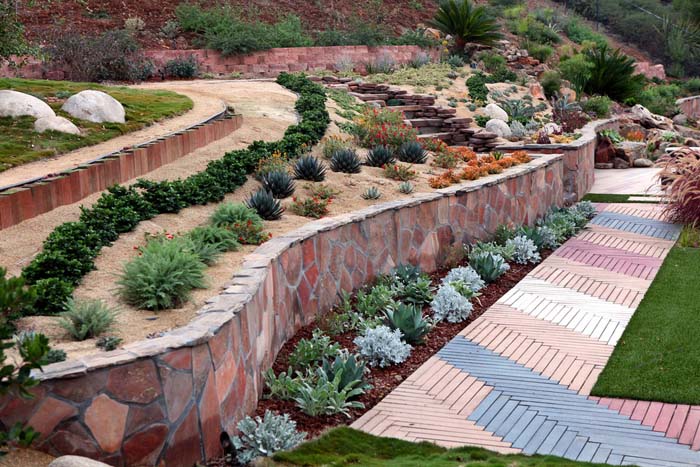
Several sections here use different materials for retaining walls.
Stone slabs, wood edging, and bricks work together by keeping the reddish brick color.
via Houzz
18. Prevent Erosion with Creeping Phlox Ground Cover
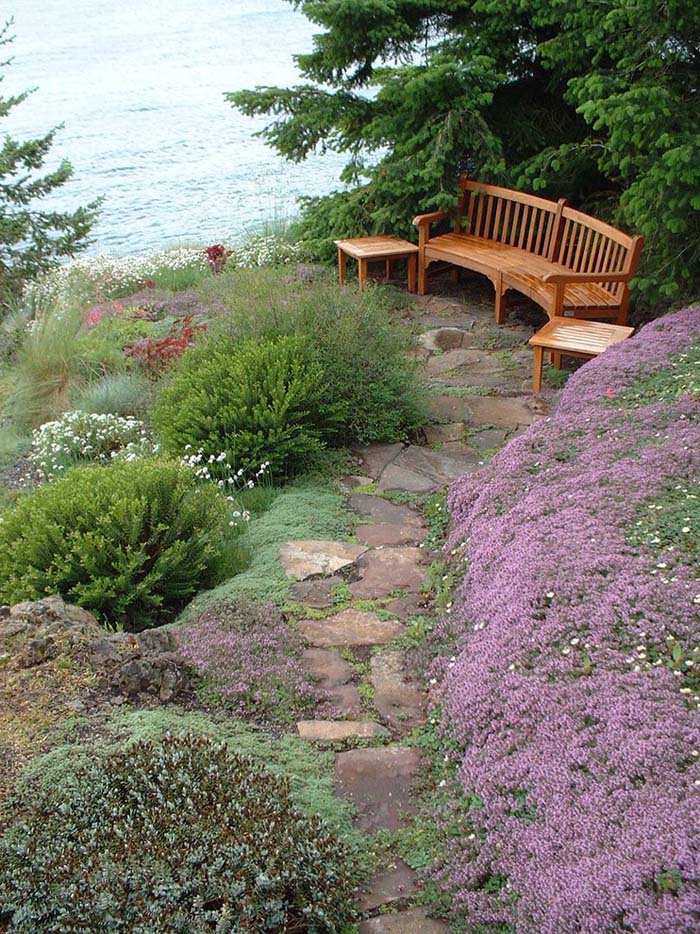
Secluded seating areas are one of the most popular ideas for landscaping hills. A path was created using irregular stone pavers.
Creeping Phlox on the hill adds color while preventing erosion. More ground cover and low bushes won’t block the beautiful scenery.
19. Incorporate Plants in Retaining Walls and Paving Stones
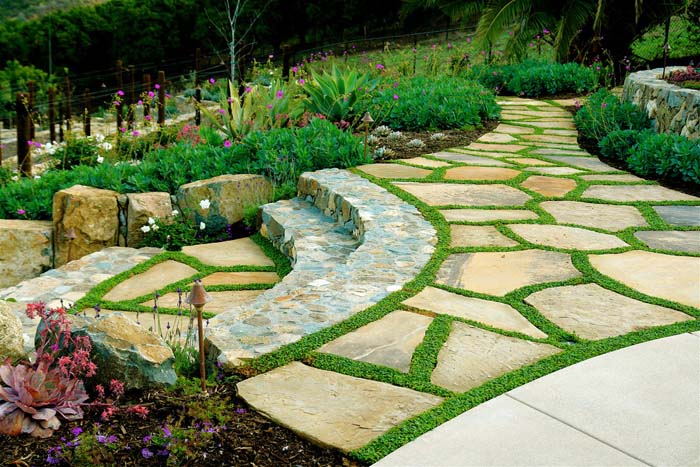
The retaining wall here is softened by using plants as edging.
Large flagstone pavers are given a unique look by deliberately planting grass between the edges.
20. Reclaimed Bricks Create Retaining Wall for Wildflower Beds
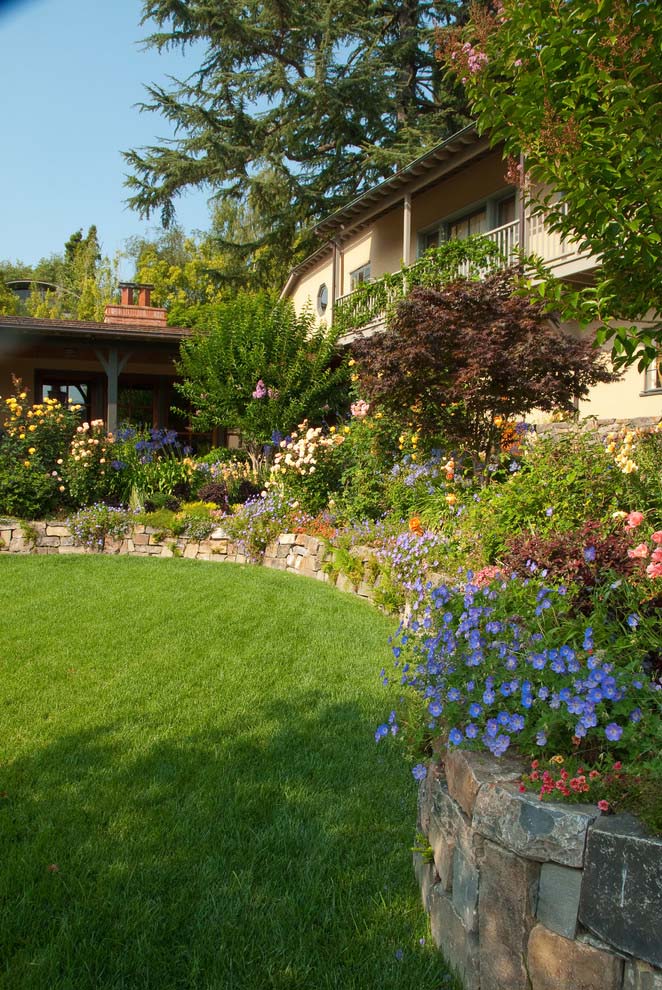
Wildflowers are beautiful as a backdrop to the turf.
A low retaining wall built from reclaimed hand-cut bricks is the perfect choice for the informal flower beds.
via David Thorne
21. Provide Stability with White Gravel Rocks and Railroad Ties
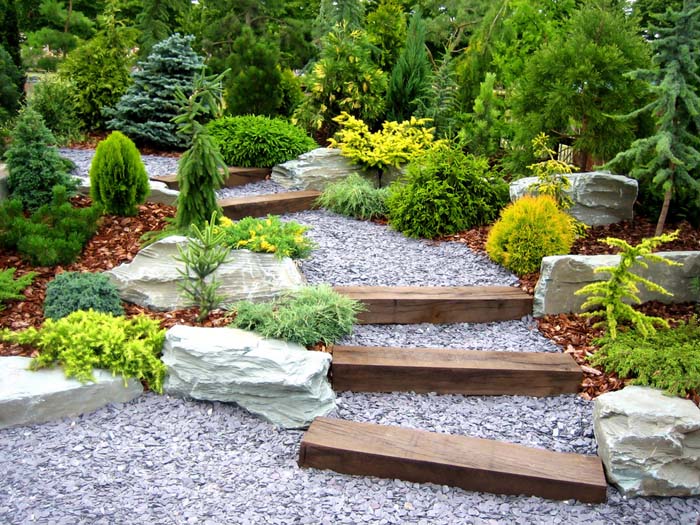
When the slope is soft, you have more options when choosing materials for steps.
White gravel rocks can be used and held in place using railroad ties. Gravel isn’t ideal on steep slopes as you have no traction and can slide out of control.
via Dabah Designs
22. Get a Polished Look with Raised Garden Beds
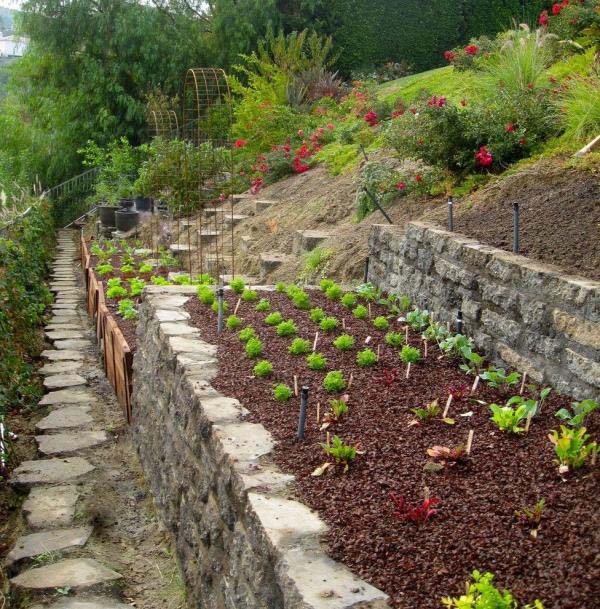
Hills are the perfect place to build raised garden beds. Fruits and vegetables are planted along this path. Plants with roots that need deep soil can be planted in the taller retaining walls.
Herbs are a good choice for hillside landscaping. There are many varieties that have deep roots which will help deter soil erosion.
23. Unwind in Luxury with Stone Steps and Uniform Brick Walls
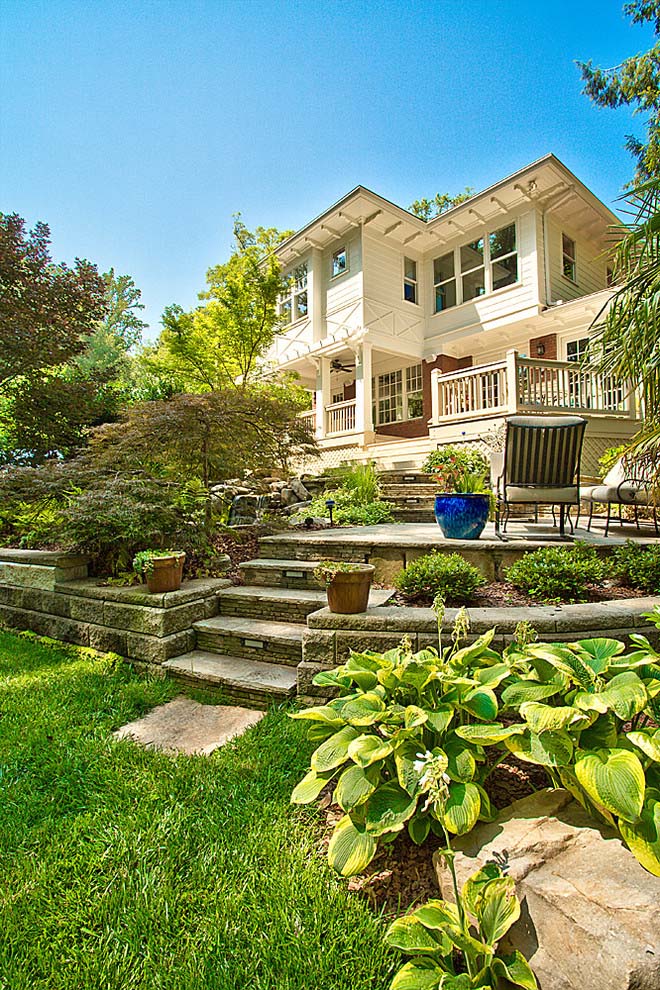
Using stone slabs for the steps and uniform bricks for the walls creates a formal look to this tiered patio.
via Alair Homes
24. Bring Rustic Elegance with Stone Slab Stairs
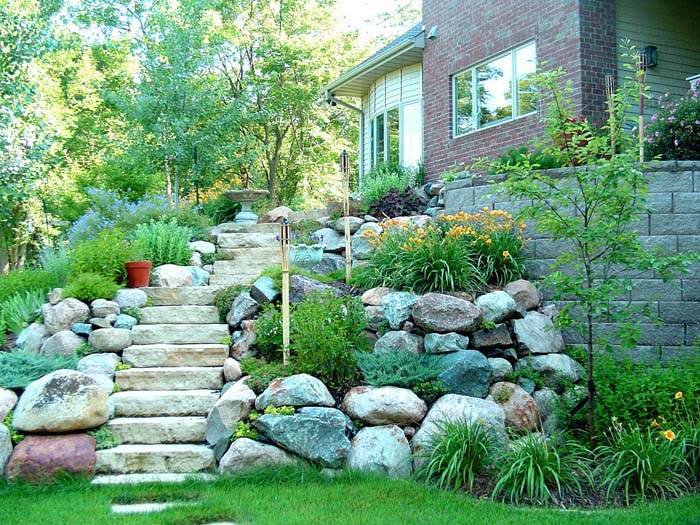
Use stone slabs for natural-looking stairs. The large rocks and boulders on each side slow down erosion and are a cheap landscaping idea.
Shrubs and flowers soften the look.
25. Create a Lavish Yard with Rock Wall Switchback Stairs
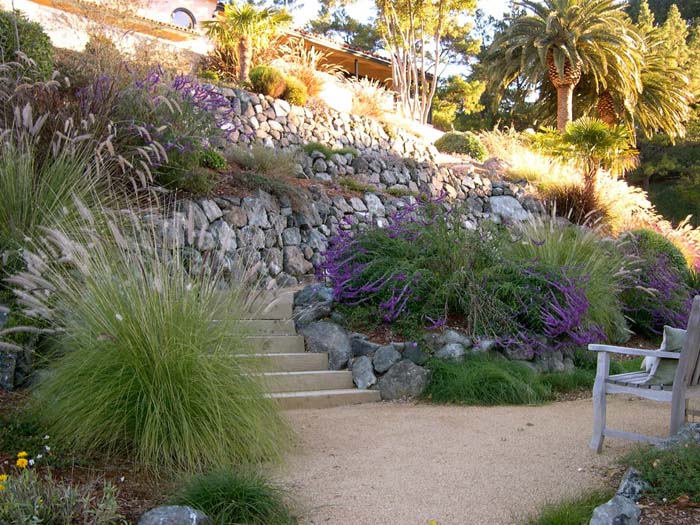
A tiered switchback path was created using rock walls. The stairs were built with poured cement.
They lead to a quiet, shaded seating area.
26. Get a Contemporary Vibe with Tiered Rock Garden
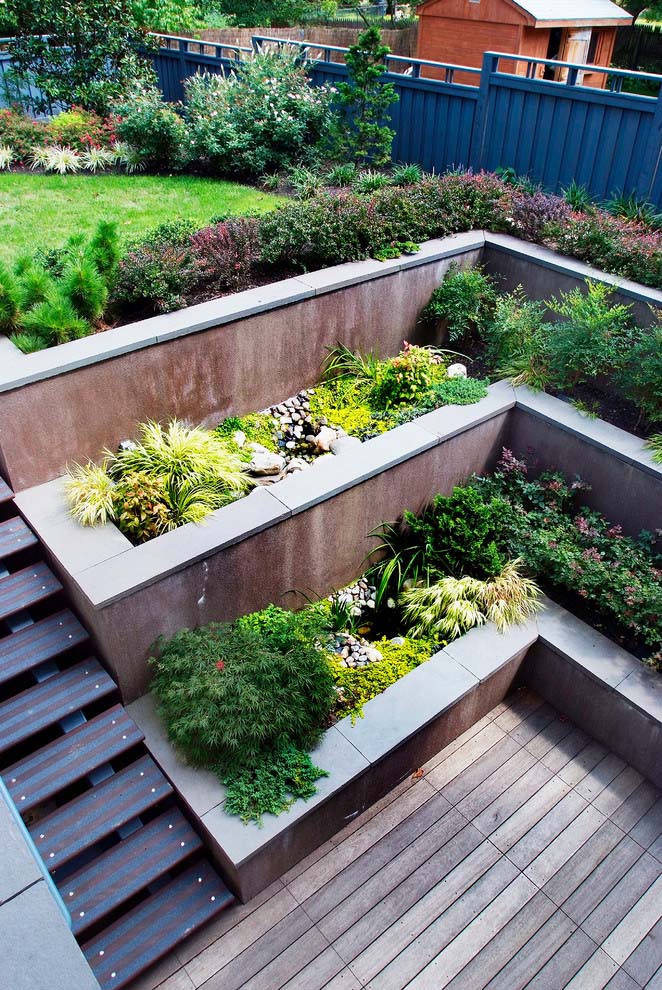
Retaining walls were created in tiers. Rock gardens dotted with slow-growing plants are a low-maintenance solution.
27. Spruce Up Your Mulch Beds with Plants

A steep slope may not be accessible for daily maintenance.
In this case, one set of stairs is built into the sides of the hill. All the grass was removed and replaced with mulch.
via Design Alchemy

